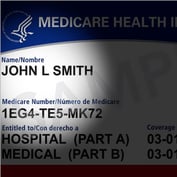Officials at the U.S. Department of the Health and Human Services (HHS) and its balky child agency, the Centers for Medicare & Medicaid Services (CMS), waved questions and concerns away in the months leading up to Oct. 1, 2013, as they prepared to launch the notoriously glitch-plagued Patient Protection and Affordable Care Act (PPACA) public exchange system.
The HealthCare.gov enrollment system for states with HHS-run exchanges turned out to be a nightmare.
Most of the states with state-based exchanges had serious problems with their own exchange enrollment and administration systems.
But the officials in charge of exchange construction told outsiders that everything was fine, and that they should be on their way.
In February 2013, for example, Gary Cohen, the former director of the Center for Consumer Information & Oversight (CCIIO), the CMS agency in charge of the PPACA commercial health insurance programs housed at HHS, declared at a Senate Finance Committee hearing that, “We will be ready” for the first open enrollment season.
In April 2013, Kathleen Sebelius, the former HHS secretary, told a House Energy & Commerce subcommittee, “We are moving ahead. We are definitely going to be open for open enrollment starting Oct. 1 of 2013.”
Sebelius pointed out during the April 2013 hearing that Congress had contributed to exchange construction problems by providing only 10 percent of the startup money promised by PPACA. Maybe, tactically, she was smart to try to ice Congress out.
But investigators at the U.S. Government Accountability Office (GAO) and the HHS Office of Inspector General (HHS OIG) may have contributed to the HealthCare.gov construction problems by biting their tongues and failing to detect or report on critical concerns until consumers had already spent months facing HealthCare.gov error screens.
Now, history seems to be repeating itself with the startup of the kidneys, liver and thyroid gland of the exchange system: a temporary PPACA reinsurance program, a temporary PPACA risk corridors underwriting margin protection program, and a permanent risk-adjustment program that are supposed to use cash from medical insurers with relatively low-risk enrollees to help insurers with high-risk enrollees.








 March 31, 2015 at 10:08 AM
March 31, 2015 at 10:08 AM










